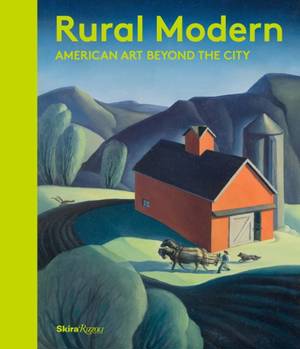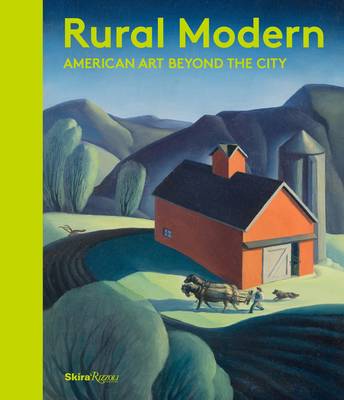
- Afhalen na 1 uur in een winkel met voorraad
- Gratis thuislevering in België vanaf € 30
- Ruim aanbod met 7 miljoen producten
- Afhalen na 1 uur in een winkel met voorraad
- Gratis thuislevering in België vanaf € 30
- Ruim aanbod met 7 miljoen producten
Zoeken
Rural Modern
American Art Beyond the City
Amanda C Burdan, Betsy Fahlman, Christine Podmaniczky, Jonathan Walz, Catherine Whitney
Hardcover | Engels
€ 48,95
+ 97 punten
Omschrijving
An essential look at American modernism as seen through the landscape painting of Thomas Hart Benton, Charles Demuth, Georgia O'Keeffe, Grant Wood, Andrew Wyeth, and many others. Paintings of New England coastlines, small-town Pennsylvania, Southwestern canyons, Midwestern farms, and other evocative landscapes fill the pages of Rural Modern. More than sixty modernist works, created between the wars, present an important and often overlooked history: how American painters adapted avant-garde styles like Cubism and Fauvism to reimagine familiar landscapes and develop a distinctively American modernist vernacular. Richly illustrated and with insightful essays by noted scholars, Rural Modern traces this development through a broad range of works by both lesser-known and widely celebrated artists, including Arthur Dove, Dale Nichols, Grant Wood, N. C. Wyeth, Charles Sheeler, Charles Burchfield, Marsden Hartley, and Stuart Davis. As important as the marvel of the twentieth-century city was to modernist artists such as these, many sought respite and even refuge in quieter, rural areas of the country, and soon helped to confirm modernism's enduring nature.
Specificaties
Betrokkenen
- Auteur(s):
- Uitgeverij:
Inhoud
- Aantal bladzijden:
- 208
- Taal:
- Engels
Eigenschappen
- Productcode (EAN):
- 9780847849727
- Verschijningsdatum:
- 18/10/2016
- Uitvoering:
- Hardcover
- Formaat:
- Genaaid
- Afmetingen:
- 246 mm x 284 mm
- Gewicht:
- 1474 g

Alleen bij Standaard Boekhandel
+ 97 punten op je klantenkaart van Standaard Boekhandel
Beoordelingen
We publiceren alleen reviews die voldoen aan de voorwaarden voor reviews. Bekijk onze voorwaarden voor reviews.








